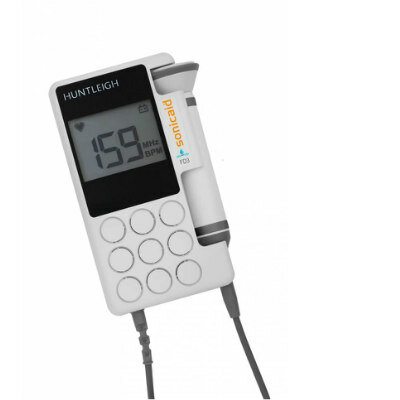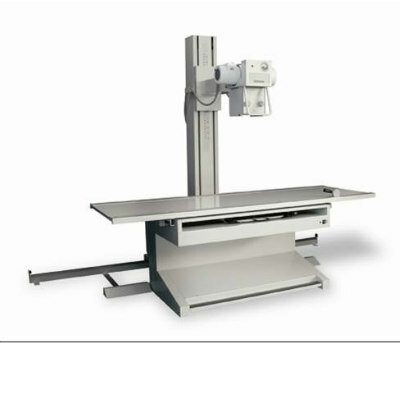3D Printing Aids Surgical Separation of Siamese Twins
|
By MedImaging International staff writers Posted on 13 Dec 2015 |

Image: 3-D color segmentation of CT data with 3D model (Photo courtesy of Texas Children\'s Hospital).
A new study describes how computerized tomography (CT) imaging and three-dimensional (3D) printing helped plan the surgical separation of conjoined twins.
In the study, researchers at Texas Children's Hospital (Houston, USA) described a new technique they used to surgically separate conjoined twins from Lubbock (TX, USA) born in April 2014, who were connected from the chest all the way down to the pelvis. To prepare for the separation surgery, the researchers performed volumetric CT imaging with a 320-detector scanner, administering intravenous contrast separately to both twins to enhance views of vital structures and help plan how to separate them to ensure survival of both children.
They also used a technique known as target mode prospective electrocardiogram (ECG) gating to freeze the heart and get a more detailed view of the cardiovascular anatomy, while keeping the radiation exposure low. The CT imaging results were then printed as a color-coded physical 3D model with skeletal structures and supports made in hard plastic resin, and soft organs built from a rubber-like material. The models were designed so that they could be assembled together and separated during the surgical planning process.
The CT scans revealed that the babies' hearts were in the same cavity, but were not fused. They also revealed the existence of a “plane of separation” of the joined liver. To assist separation, the liver was printed separately, with major blood vessels depicted in white for better visibility. The surgical team then underwent an exhaustive preparation process leading up to actual surgery, performed on February 17, 2015, by a team of more than 26 clinicians, including 12 surgeons, 6 anesthesiologists, and 8 surgical nurses. The study was presented at the Radiological Society of North America (RSNA) annual meeting, held during November-December 2015 in Chicago (IL, USA).
“The surgeons found the landmarks for the liver, hearts and pelvic organs just as we had described; the concordance was almost perfect,” said lead author and study presenter Rajesh Krishnamurthy, MD, chief of radiology research and cardiac imaging at Texas Children's Hospital. “The 3D model also served another important function—helping the twins' parents, Elysse and John Eric Mata, understand the process. They said 'for the first time, we understand what is going to happen with our babies.’”
Related Links:
Texas Children's Hospital
3D model of conjoined twins – video
In the study, researchers at Texas Children's Hospital (Houston, USA) described a new technique they used to surgically separate conjoined twins from Lubbock (TX, USA) born in April 2014, who were connected from the chest all the way down to the pelvis. To prepare for the separation surgery, the researchers performed volumetric CT imaging with a 320-detector scanner, administering intravenous contrast separately to both twins to enhance views of vital structures and help plan how to separate them to ensure survival of both children.
They also used a technique known as target mode prospective electrocardiogram (ECG) gating to freeze the heart and get a more detailed view of the cardiovascular anatomy, while keeping the radiation exposure low. The CT imaging results were then printed as a color-coded physical 3D model with skeletal structures and supports made in hard plastic resin, and soft organs built from a rubber-like material. The models were designed so that they could be assembled together and separated during the surgical planning process.
The CT scans revealed that the babies' hearts were in the same cavity, but were not fused. They also revealed the existence of a “plane of separation” of the joined liver. To assist separation, the liver was printed separately, with major blood vessels depicted in white for better visibility. The surgical team then underwent an exhaustive preparation process leading up to actual surgery, performed on February 17, 2015, by a team of more than 26 clinicians, including 12 surgeons, 6 anesthesiologists, and 8 surgical nurses. The study was presented at the Radiological Society of North America (RSNA) annual meeting, held during November-December 2015 in Chicago (IL, USA).
“The surgeons found the landmarks for the liver, hearts and pelvic organs just as we had described; the concordance was almost perfect,” said lead author and study presenter Rajesh Krishnamurthy, MD, chief of radiology research and cardiac imaging at Texas Children's Hospital. “The 3D model also served another important function—helping the twins' parents, Elysse and John Eric Mata, understand the process. They said 'for the first time, we understand what is going to happen with our babies.’”
Related Links:
Texas Children's Hospital
3D model of conjoined twins – video
Latest Imaging IT News
- New Google Cloud Medical Imaging Suite Makes Imaging Healthcare Data More Accessible
- Global AI in Medical Diagnostics Market to Be Driven by Demand for Image Recognition in Radiology
- AI-Based Mammography Triage Software Helps Dramatically Improve Interpretation Process
- Artificial Intelligence (AI) Program Accurately Predicts Lung Cancer Risk from CT Images
- Image Management Platform Streamlines Treatment Plans
- AI-Based Technology for Ultrasound Image Analysis Receives FDA Approval
- AI Technology for Detecting Breast Cancer Receives CE Mark Approval
- Digital Pathology Software Improves Workflow Efficiency
- Patient-Centric Portal Facilitates Direct Imaging Access
- New Workstation Supports Customer-Driven Imaging Workflow
Channels
MRI
view channel
PET/MRI Improves Diagnostic Accuracy for Prostate Cancer Patients
The Prostate Imaging Reporting and Data System (PI-RADS) is a five-point scale to assess potential prostate cancer in MR images. PI-RADS category 3 which offers an unclear suggestion of clinically significant... Read more
Next Generation MR-Guided Focused Ultrasound Ushers In Future of Incisionless Neurosurgery
Essential tremor, often called familial, idiopathic, or benign tremor, leads to uncontrollable shaking that significantly affects a person’s life. When traditional medications do not alleviate symptoms,... Read more
Two-Part MRI Scan Detects Prostate Cancer More Quickly without Compromising Diagnostic Quality
Prostate cancer ranks as the most prevalent cancer among men. Over the last decade, the introduction of MRI scans has significantly transformed the diagnosis process, marking the most substantial advancement... Read moreUltrasound
view channel
Deep Learning Advances Super-Resolution Ultrasound Imaging
Ultrasound localization microscopy (ULM) is an advanced imaging technique that offers high-resolution visualization of microvascular structures. It employs microbubbles, FDA-approved contrast agents, injected... Read more
Novel Ultrasound-Launched Targeted Nanoparticle Eliminates Biofilm and Bacterial Infection
Biofilms, formed by bacteria aggregating into dense communities for protection against harsh environmental conditions, are a significant contributor to various infectious diseases. Biofilms frequently... Read moreNuclear Medicine
view channel
New SPECT/CT Technique Could Change Imaging Practices and Increase Patient Access
The development of lead-212 (212Pb)-PSMA–based targeted alpha therapy (TAT) is garnering significant interest in treating patients with metastatic castration-resistant prostate cancer. The imaging of 212Pb,... Read moreNew Radiotheranostic System Detects and Treats Ovarian Cancer Noninvasively
Ovarian cancer is the most lethal gynecological cancer, with less than a 30% five-year survival rate for those diagnosed in late stages. Despite surgery and platinum-based chemotherapy being the standard... Read more
AI System Automatically and Reliably Detects Cardiac Amyloidosis Using Scintigraphy Imaging
Cardiac amyloidosis, a condition characterized by the buildup of abnormal protein deposits (amyloids) in the heart muscle, severely affects heart function and can lead to heart failure or death without... Read moreGeneral/Advanced Imaging
view channel
New AI Method Captures Uncertainty in Medical Images
In the field of biomedicine, segmentation is the process of annotating pixels from an important structure in medical images, such as organs or cells. Artificial Intelligence (AI) models are utilized to... Read more.jpg)
CT Coronary Angiography Reduces Need for Invasive Tests to Diagnose Coronary Artery Disease
Coronary artery disease (CAD), one of the leading causes of death worldwide, involves the narrowing of coronary arteries due to atherosclerosis, resulting in insufficient blood flow to the heart muscle.... Read more
Novel Blood Test Could Reduce Need for PET Imaging of Patients with Alzheimer’s
Alzheimer's disease (AD), a condition marked by cognitive decline and the presence of beta-amyloid (Aβ) plaques and neurofibrillary tangles in the brain, poses diagnostic challenges. Amyloid positron emission... Read more.jpg)
CT-Based Deep Learning Algorithm Accurately Differentiates Benign From Malignant Vertebral Fractures
The rise in the aging population is expected to result in a corresponding increase in the prevalence of vertebral fractures which can cause back pain or neurologic compromise, leading to impaired function... Read moreImaging IT
view channel
New Google Cloud Medical Imaging Suite Makes Imaging Healthcare Data More Accessible
Medical imaging is a critical tool used to diagnose patients, and there are billions of medical images scanned globally each year. Imaging data accounts for about 90% of all healthcare data1 and, until... Read more
Global AI in Medical Diagnostics Market to Be Driven by Demand for Image Recognition in Radiology
The global artificial intelligence (AI) in medical diagnostics market is expanding with early disease detection being one of its key applications and image recognition becoming a compelling consumer proposition... Read moreIndustry News
view channel
Bayer and Google Partner on New AI Product for Radiologists
Medical imaging data comprises around 90% of all healthcare data, and it is a highly complex and rich clinical data modality and serves as a vital tool for diagnosing patients. Each year, billions of medical... Read more



















